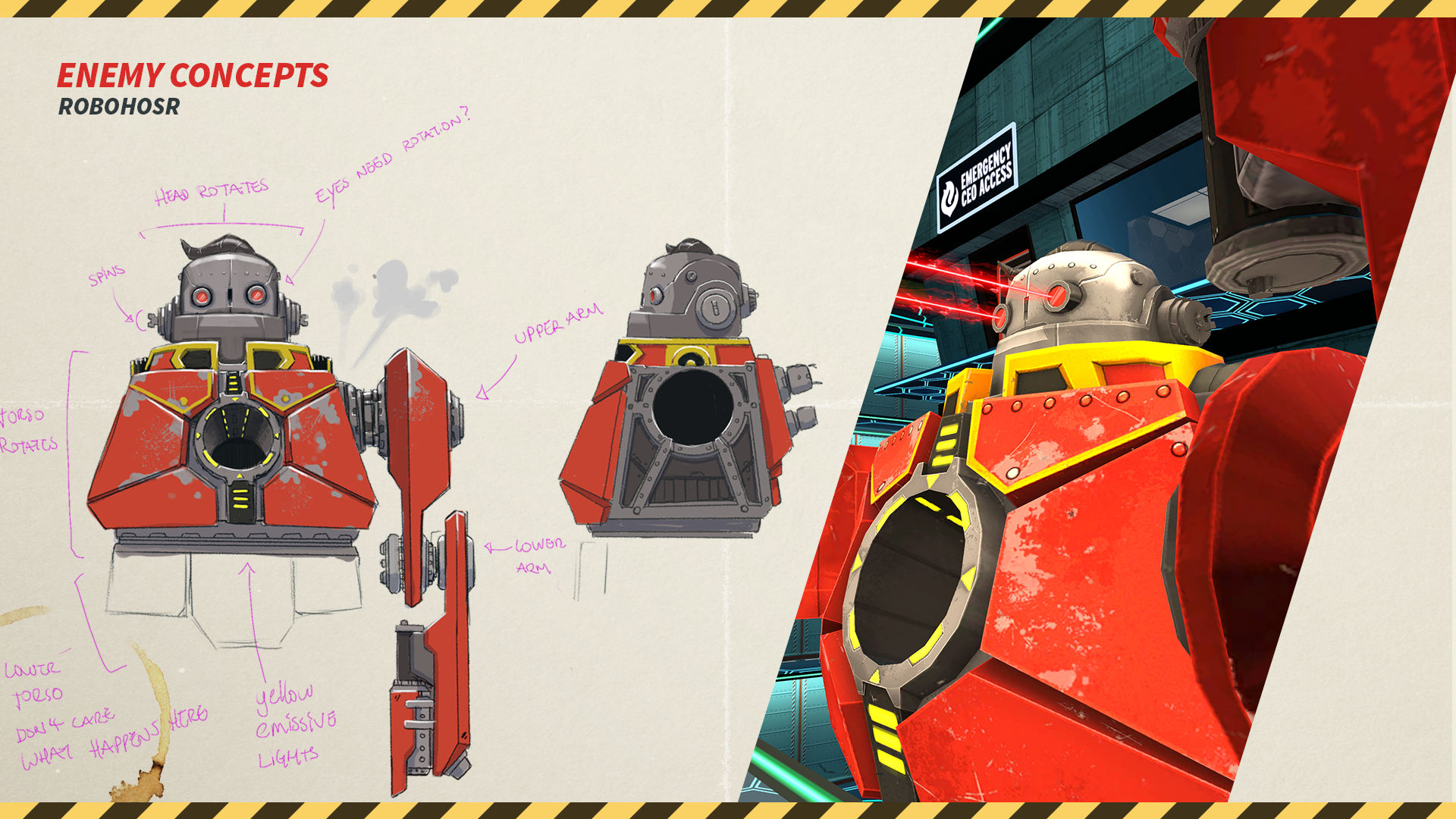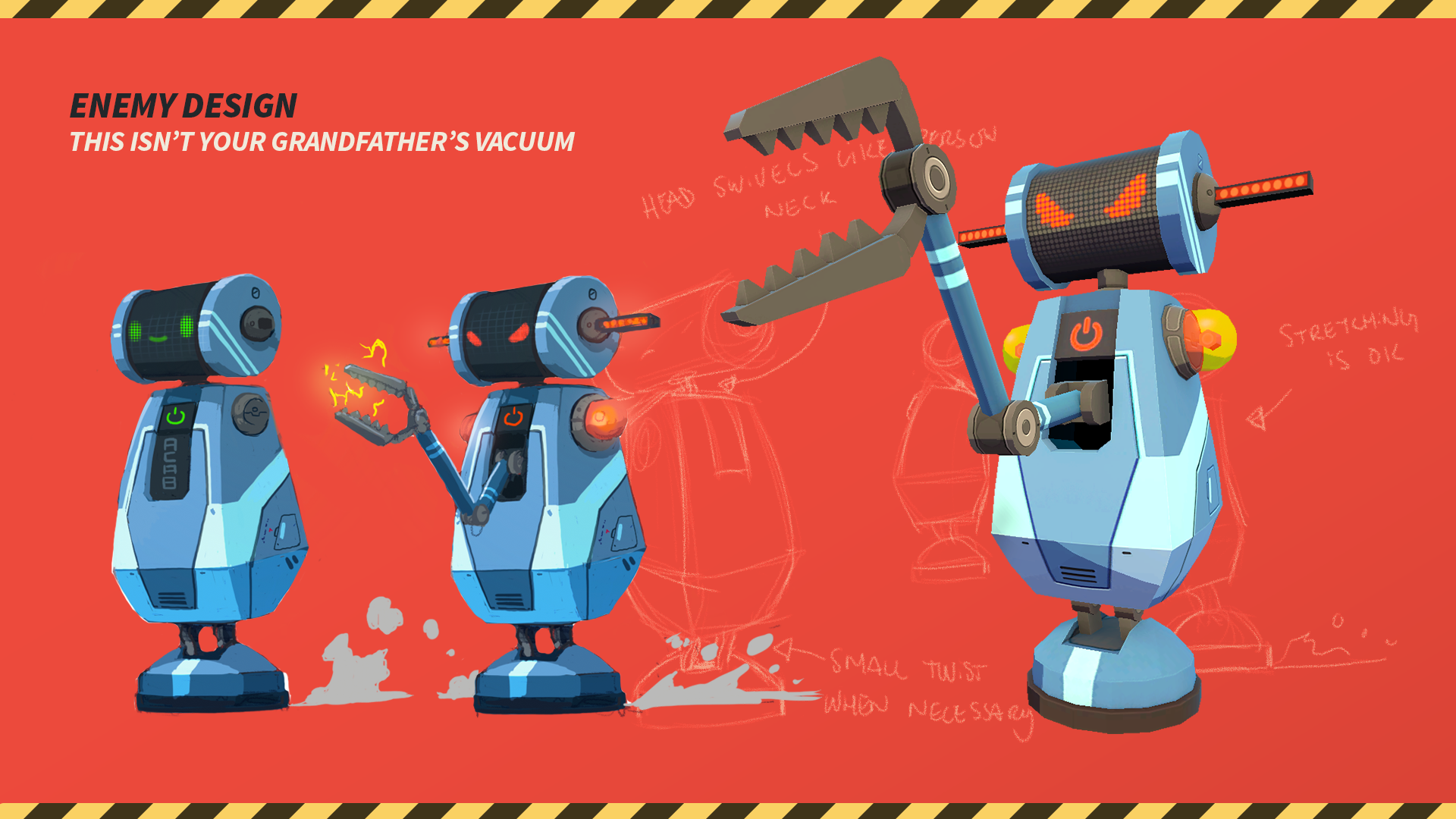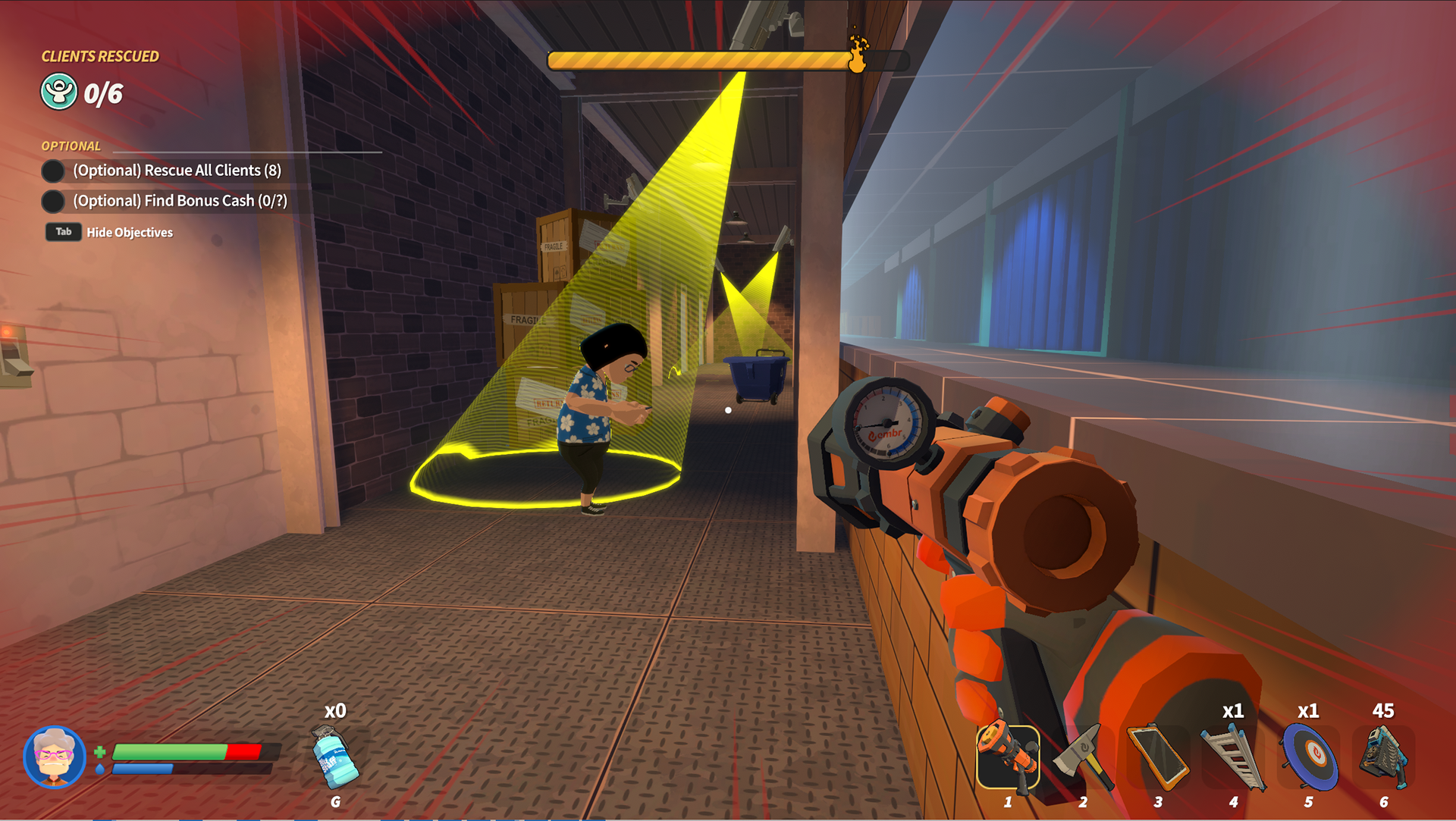Out of the frying pan...
When I joined the Embr team, we had a Game Designer/Programmer and an environment artist, with 4 months to take a greybox prototype to a presentable vertical slice at PAX. I was still finishing up all the final asset production for Hamsterdam's release at the time, but was also drawing up concepts for the environment, clients, producing a UI, and diving into vfx particles for Embr.
This prototype managed to help us land a publisher to help support the team, which eventually grew to 10 core devs on production ( 4 staff artists & 2 contractors) with about 1.5 years to produce the final game. During this time, I continued developing the worldbuilding through concept art, designed the UI from initial wireframe to final implementation, created greybox levels for production, designed key art, marketing graphic assets, and graphic in-game texture assets.
Embr is due to launch on PC and consoles in Summer 2021.
Role
Art Direction, Concept Art,UI/UX Design/Integration, Visual Design, Level Design, Marketing Graphic Design
Tools
Adobe (PS, AI, XD) , Unity
Studio
Muse Games
Additional Credits
Zoe Huang, Eason Hsu, Saya Lin, Sebastian Gat
Art Direction & Worldbuilding
Embr takes place in the near-future, where social services have slowly been replaced with privatized corporations and gig workers in their stead. Embr, the corporation, has privatized Rescue Services where everyday people can be heroes.
The general art style had to be visually friendly to cater to a wide age demographic, while grounding it in a sense of "reality" to a certain degree. As the gameplay is in first person, movement constraints dictated how far we could push character design, and limited time/resources dictated how much we'd need to simplify the overall aesthetics. The core conceit for the character designs was that it had to reflect the "everyperson." Ill prepared for the role as a firefighter, while still brave (or ignorant) enough to face the dangers of the gig. We didn't want the characters to have a story, but still give them enough of a visual personality for players to form some type of connection with.




The architecture in the world is inspired by the work of Dionisio Gonzales, the Kowloon Walled City, and container homes. We needed a way to quickly design levels, and the modular aspect of these lent itself well to a world where building and safety standards weren't really much of a concern any longer. While later levels became more bespoke, with more handcrafted designs, utilizing a modular "kitbash" style of design early on, allowed us to save significant time with crafting levels. I personally designed the greybox for 6 of the levels in the final game, as well as developed the in-world alternate brands to reinforce their place.

Defendr Headquarters (Environment Modeling: Saya Lin)

Defendr Headquarters (Environment Modeling: Saya Lin)

Defendr Headquarters (Environment Modeling: Saya Lin)

Defendr Headquarters (Environment Modeling: Saya Lin)

YouWork Offices (Environment Modeling: Saya Lin)

YouWork Offices (Environment Modeling: Saya Lin)

St. Johns Street (Environment Modeling: Zoe Huang)
Tools, Gear and Props
The idea behind the tools and gear in the game is that it had to be grounded enough to be believable, but used in an unbelievable way. A garden hose repurposed to a firefighting spray, a trampoline as a rescue tool, a metal box... well... it's just a box. We wanted it to seem like Embr bought out a bunch of surplus tools from various sources, slapped their logo on it, and sold it to their gig workers at exorbitant markups.
Driven in part by a lot of real world examples, the in-world props are a satirical "what-ifs" that are grounded in our commoditized, consumerist world, but pushed just a little bit further.


User Interface
The UI was done fairly quickly in two parts. Our earliest iteration was designed and implemented in 3 weeks to have it ready for PAX. It attempted to try and fit everything into a phone, with the idea we'd later have in-world diegetic displays for showcasing character/vehicle/and tools. However, as the project continued, we realized that there simply wasn't enough time/resources to do a lot of what we set out to do. I knew we'd have to refactor the UI eventually, but it was a matter of finding the time to do so.
About 6 months from our release date, we restarted the process. We tried to keep as much of the individual screens relatively similar to the original in order to limit the effect it would have on the programmer's scheduling, opening up the UI to be more user-friendly, while fixing flow issues we observed were major pain points for our players. I spent one month redesigning the HUD and Menu system, another on implementation, and slowly polished up animations in-between other tasks.







Mission Start

Screen Space Electrocution FX
